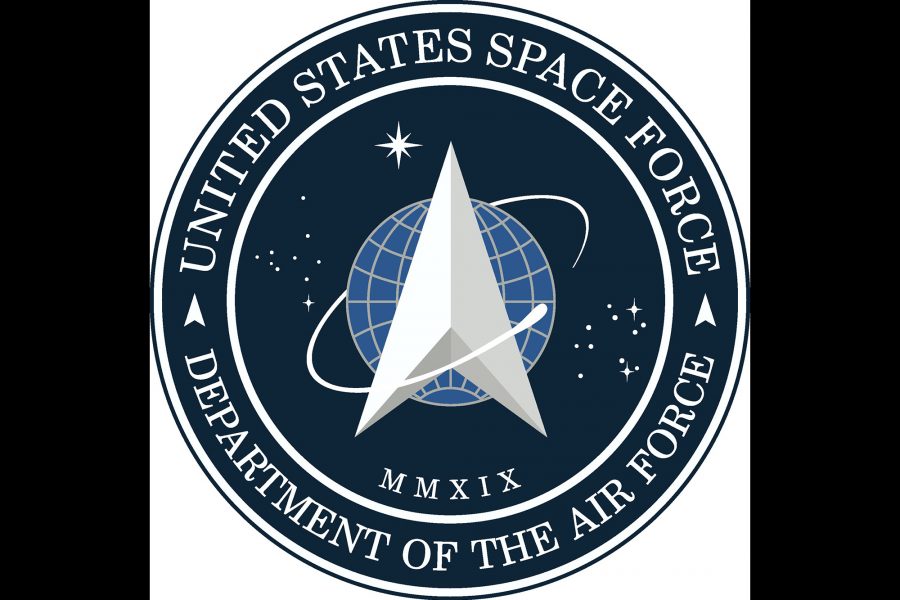The U.S. Space Force will maintain a small and low-priced footprint, relying heavily on the existing USAF force structure. The Air Force on Feb. 3 sent Congress a 26-page document outlining the planned structure of the new service—with the main goal to be lean, agile, and “minimize cost and bureaucracy.” The document, which was required under the fiscal 2020 National Defense Authorization Act, likely will continue to evolve, with a finalized version expected in early May.
“Building the Space Force from the ground up is an historic opportunity to take a clean sheet approach to designing a 21st century military service with a streamlined organizational structure,” Air Force Secretary Barbara Barrett wrote in the document. “DOD is focused on creating a structure that removes traditional layers of bureaucracy while maintaining clear lines of authority, responsibility, and accountability. The successful establishment of the Space Force is vital to the continued ability of the United States to compete, deter, and win in an era of great power competition.”
U.S. Space Force Vice Commander Lt. Gen. David Thompson, still a uniformed member of the USAF, told reporters during a Feb. 5 briefing there currently are 6,000 Air Force personnel, previously assigned to Air Force Space Command, who are now assigned to the Space Force. The goal is to have the personnel in key career fields—space operations, intelligence, engineering, acquisition, science, and cyber—begin to transfer this year, with all USAF personnel in the service by 2021. After that, the Space Force will begin transferring Army and Navy personnel.
By keeping the personnel and infrastructure small, the Air Force expects the “additive cost” of the new service to be less than $500 million per year, and less than $2 billion total from fiscal 2020-2024, according to the planning document.
While the initial focus is bringing USAF personnel into the service itself, planning and leadership teams will be focused on jointness from the beginning, said Maj. Gen. Clint Crosier, the director of the U.S. Space Force Planning Office.
The Air Force does not yet have a name for these personnel, but planners have reached out to the Air Force Academy’s language department, the Defense Language Institute, and other language centers for help in what to call those assigned to the new service, Thompson said.
Though one possibility can be ruled out: They will not be “spacemen,” he said.
Officially bringing airmen into the new service will take time. Changing the commissioning and enlistment process requires Congressional authorization, and the Pentagon wants to ensure bureaucratic processes such as pay and benefits are established before personnel join.
This means that for now, Chief of Space Operations Gen. Jay Raymond remains the only member of the new service, Thompson said.
Eventually, all of DOD’s space-specific career fields will make up the approximately 16,000 members of the Space Force. Non-space-specific jobs related to the service, such as medical, civil engineering, finance, etc., will remain in the Air Force. This will reduce the overall size of the service by about 7,500 members, the Air Force told lawmakers in the document.
“There will be more people assigned to U.S. Space Force critical support than we’ll have in the U.S. Space Force because people in U.S. Space Force are a limited number of skill sets,” Crosier said.
While there is a process for all services to join, the Air Force has not proposed how the National Guard and Reserve will be a part of the Space Force. That will be outlined in a future Space Force Total Force Management Plan report due to Congress next month.
Eventually, the Space Force will access officers in the same way as the Air Force, through Officer Training School, Reserve Officer Training Corps, or through the U.S. Air Force Academy, in a similar way to how Marines go through the U.S. Naval Academy. There will be a Space Force detachment at the Air Force Academy in 2020, according to the document.
Enlisted personnel will still go through the Air Force Basic Military Training structure, with curriculum and programs to be modified in the future for some space-specific training.
A headquarters base has not yet been identified for the new service, but Air Force bases will potentially be renamed as Space Force installations, “To further cement the culture and identity of the Space Force,” according to the document.
There will eventually be a vice chief of space operations who will report directly to the CSO. Barrett intends to recommend a general officer for this position, with a Senate confirmation and Presidential appointment.
The Space Force will have subordinate commands, in the same way the Air Force has nine major commands. So far, only one a few have been announced. Space Training and Readiness Command will be “devoted to growing a cadre of space warfighting professionals necessary to meet new mission demands,” while Space Operations Command will provides Space Forces and others with space resources, such as satellite communications or missile warning.
The Air Force intends to provide a report to Congress by the end of March with steps to streamline space acquisition. This would include merging the acquisition functions of the Space and Missile Systems Center, the Space Development Agency, and the Space Rapid Capabilities Office into a single authority.
The No. 1 priority for the new service is to ensure the military has what it needs to “do the jobs they do every day.” Specifically, this means providing intelligence collection, communications, navigation, and missile warning.
For example, last month when Iran fired a barrage of ballistic missiles at al-Asad Air Base in Iraq, it was Space Force-assigned personnel who spotted the first indications of the attack and tracked the missiles, allowing service members at the base to take cover and avoid sustaining any deaths in the attack.
“We have plenty to do in the United States Space Force,” Thompson said. “In fact, we’ve been doing it for a long time.”

